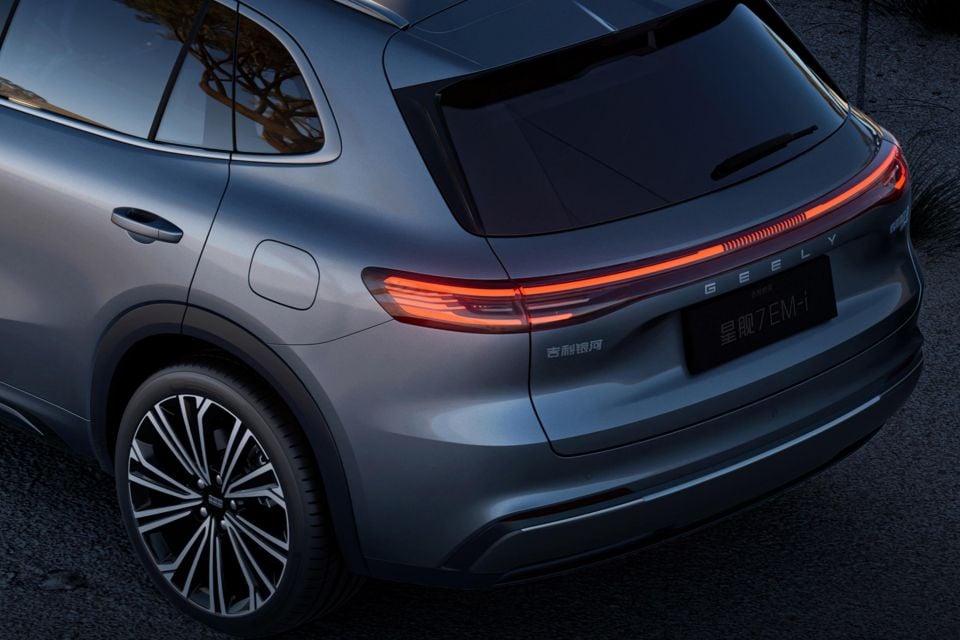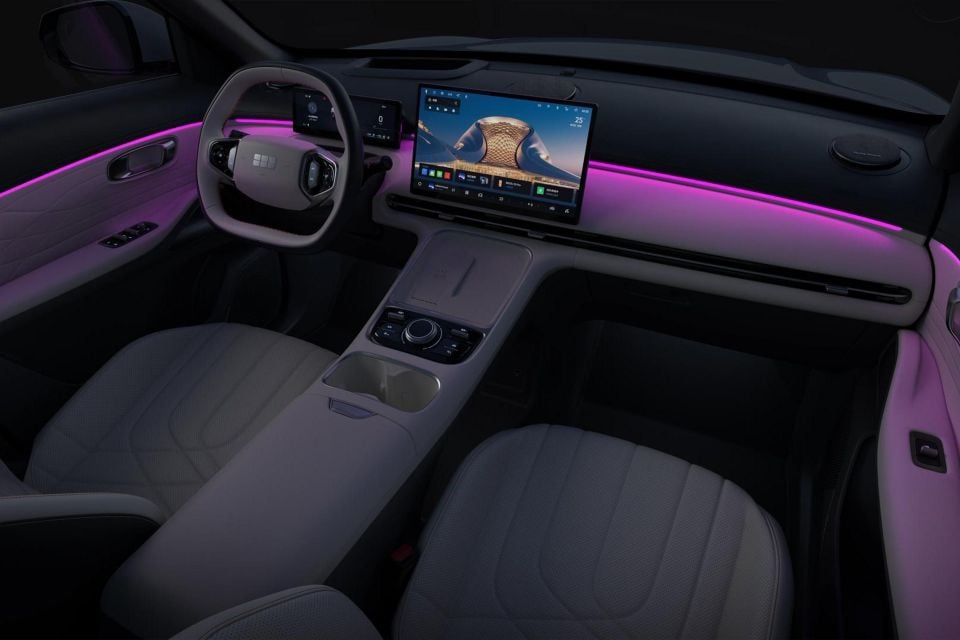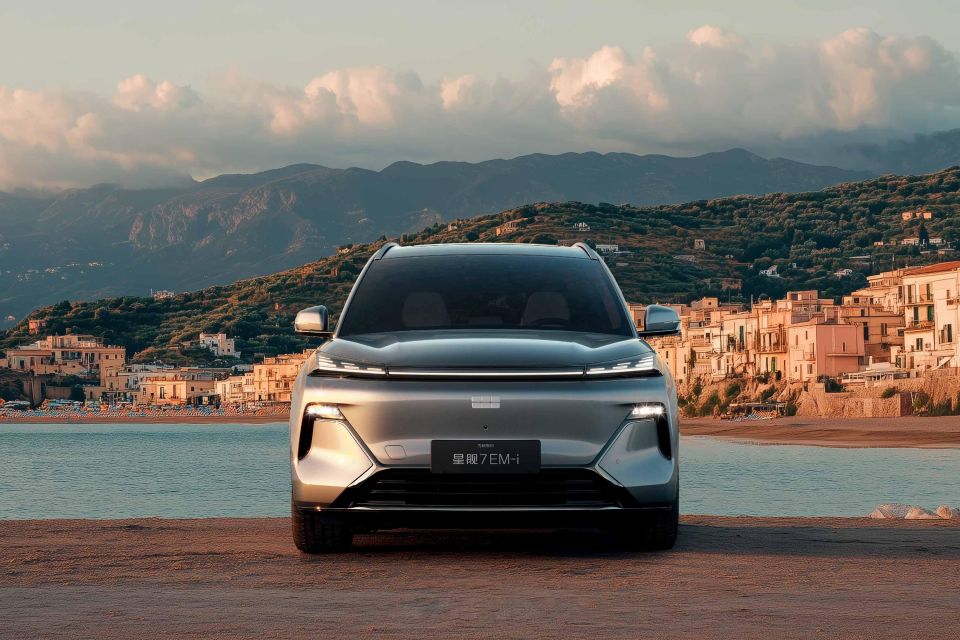Geely looks set to enter the growing contingent of mid-size plug-in hybrid (PHEV) SUVs in Australia with its Galaxy Starship 7.
A CarExpert reader has spied what appears to be a camouflaged version of the PHEV SUV testing in Melbourne’s CBD.
A search of its New South Wales number plates shows they’re attached to a 2025 Geely EX5.
The electric EX5 – known in China as the Galaxy E5 – and the plug-in hybrid Galaxy Starship 7 are closely related, sharing the same GEA platform.
Hundreds of new car deals are available through CarExpert right now. Get the experts on your side and score a great deal. Browse now.
Thus far, Geely offers only the EX5 in Australia, but at an event earlier this year it announced plans to launch more than six new energy vehicles (NEVs) in Australia over the next three years.
The use of the term NEVs confirms Geely will offer both EVs and PHEVs in our market, while at the event it also teased what appeared to be the Galaxy Starship 7.
Earlier this year, Geely also trademarked the EM-i name in Australia, which it uses for PHEVs.
“While we cannot confirm any additions to the Geely Auto Australia range at this time, we are continuously monitoring market trends and consumer behaviours to ensure our product range aligns with the preferences of local customers,” said a company spokesperson when asked if the Galaxy Starship 7 was coming here.

PHEV sales growth is now exceeding that of EVs, and the gap in sales volume between the two powertrain types is narrowing.
Geely’s Galaxy line of vehicles includes EVs and PHEVs, with the Starship 7 being thus far its only PHEV SUV.
It measures 4740mm long, 1905mm wide and 1685mm tall on a 2755mm wheelbase, or 125mm longer, 4mm wider and 15mm taller than an EX5 on a 5mm longer wheelbase.
Kerb weight is 1610kg with the smaller of its two batteries, which matches the kerb weight listed for this vehicle registration on the NSW database.

The Galaxy Starship 7 rides on MacPherson strut front and multi-link rear suspension, and is available with either 18- or 19-inch alloy wheels.
The PHEV powertrain comprises a 1.5-litre four-cylinder petrol engine producing 82kW of power and 136Nm of torque, mated with a 160kW/262Nm electric motor and a lithium iron phosphate (LFP) battery.
The smaller of the two batteries is an 8.5kWh unit offering 55km of electric-only range under the more lenient CLTC cycle, while the larger battery has a capacity of 19.09kWh and offers 120km of CLTC range.
The larger battery additionally supports 36kW DC fast-charging.

Inside, there’s a 14.6-inch touchscreen infotainment system and a 10.2-inch digital instrument cluster, as well as power-adjustable front seats.
Available equipment includes a 13.8-inch head-up display, 50W air-cooled wireless phone charger, panoramic sunroof, heated and ventilated front seats and a 16-speaker Flyme sound system.
There’s also a full suite of active safety technology available.
Should Geely launch the Galaxy Starship 7 here, it would give the brand – which only launched here earlier this year – a rival to the likes of the Mitsubishi Outlander PHEV, BYD Sealion 6, GWM Haval H6 GT PHEV and Leapmotor C10 REEV.

MG is set to return to this segment this year too with a plug-in hybrid version of its HS, while Chery is launching PHEV versions of its Tiggo 7 and Tiggo 8 SUVs mid-year.
It’s unclear how much the Galaxy Starship 7 – likely to adopt a much more boring name for our market – would cost in Australia.
In China, it has a base price 10,000 RMB (~A$2100) lower than that of the Galaxy E5.
In Australia, the EX5 is priced from $40,990 before on-road costs.


